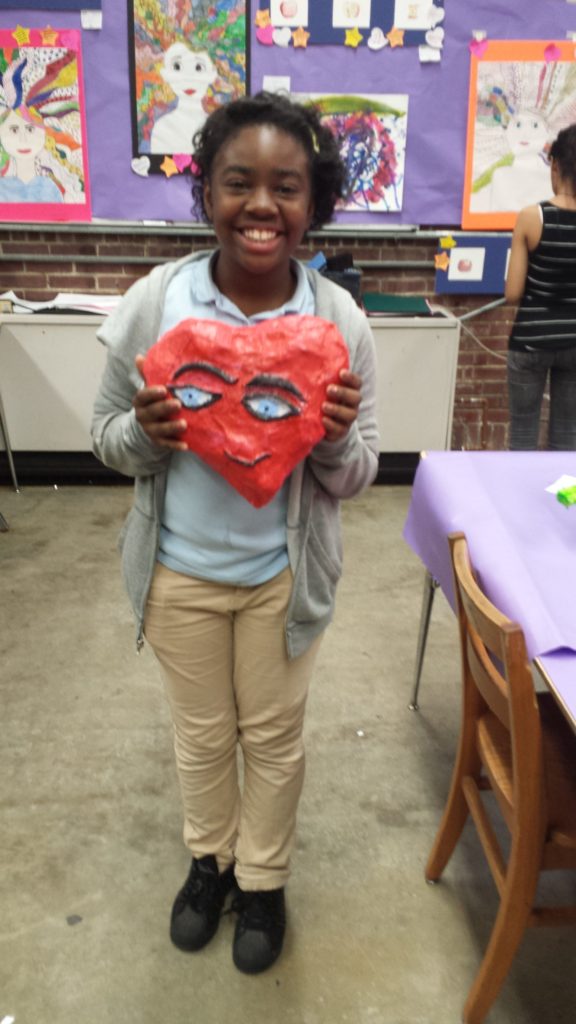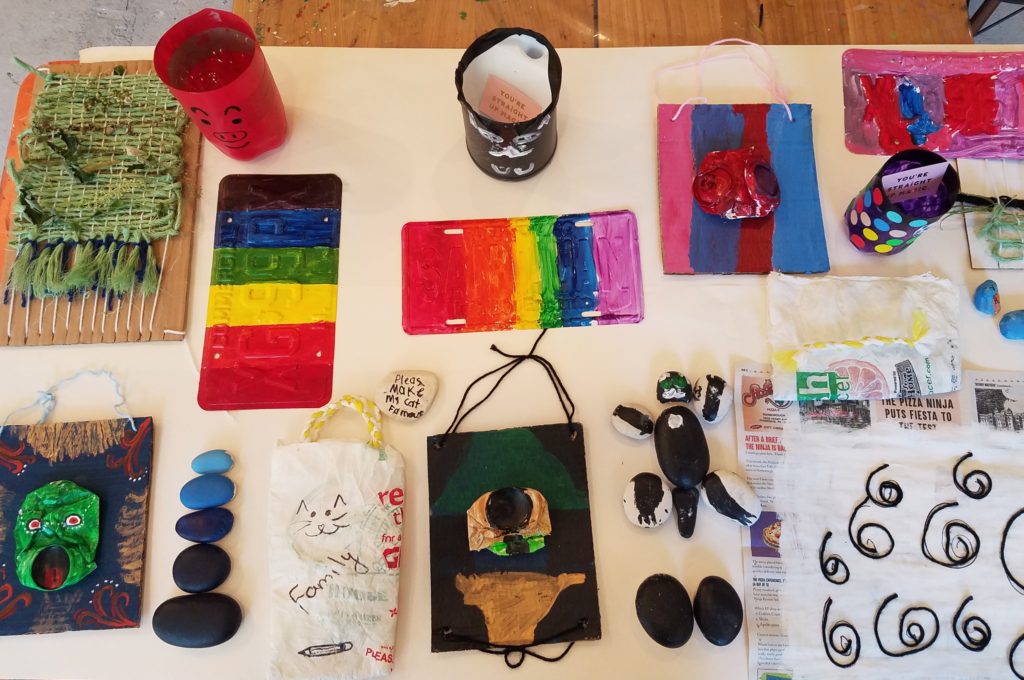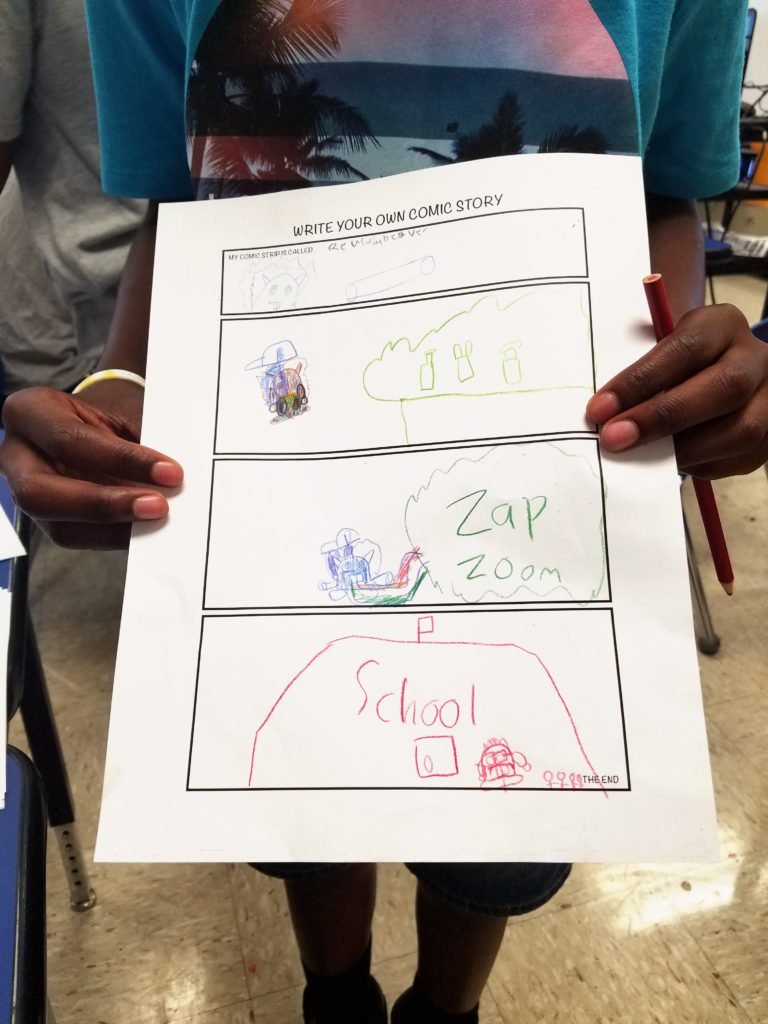March, 2019
now browsing by month
Posted by: Leslie Grace | on March 3, 2019
How to Make Your Art Room an Inclusive Space in 3 Simple Ways by Veronica Hicks
Veronica Hicks is a PAEA board member and serves as the Multi-Ethnic Concerns Representative. Below, Veronica shares 3 simple ways for you to make your art room a more inclusive space.
I’ve spent years instructing students in many different and equally wonderful art classrooms, and, like every other art teacher I know, my free time was spent thinking about how to be my best art teacher self for my students. I still spend the majority my free time thinking about my current art room and instructing art education undergraduates and grads, where I’m lucky enough to share my insights, mistakes, and successes. I’m always in awe of the ideas and thoughts a group of art educators can generate when given the time and space to solver their teaching problems. One that often surfaces in conversation is how to prepare for an inclusive classroom, one in which students of all abilities come to learn and grow. I love discussing the idea of inclusion in art classrooms but translating discussion into realistic classroom instruction can be a challenge!
You’ve probably seen how important inclusive practices are to the success of your art room. It’s important that you absorb ways to make your art room and art class practices so that each part of the room supports your goals for including people who might otherwise be excluded or marginalized in educational spaces.
Without a plan to make your classroom inclusive, your lessons can have less impact, you’ll have fewer opportunities to enhance self-concept in all students, and you may even miss out on the chance to lead by example in your school district.
So why does the task of creating an inclusive classroom seem to make art teachers nervous? Do they assume they’re not consistently assessing their space for the inclusion of all learners?
Maybe because, unless you’re an educator who likes researching and testing inclusive methods, strategizing about this topic can be exhausting! You must find practices that were tested, assess if it relates to the students you instruct, and finally decide if their results are worth trying in your own classroom … ugh, where do you even start?
Well, dear art teacher, the time for guessing is over.
Inclusive Classrooms literally means:
“All individuals, regardless of exceptionality, are entitled to the opportunity to be included in regular classroom environments while receiving the supports necessary to facilitate access to both environment and information. – Eric Shyman, 2015
Prior to the 1970s, most U.S. education environments featured widespread exclusion. Students with severe, moderate, and oftentimes even mild disabilities were excluded from public schooling. State institutions housed hundreds of thousands of children, segregating them, which ultimately showed them that their presence in ‘typical’ society was a disturbance.
Things started to change in The start of inclusion began with the Rehabilitation Act of 1973. This required disabled students their civil rights and required accommodations in schools. Followed by the Education for All Handicapped Children Act in 1975, the U.S. was on a roll towards the education of all children that we see today, including Individual Education Plans (IEPs) and 1997s Individuals with Disabilities Act, or IDEA. Now, all school districts are required to provide FAPE, or a free appropriate public education.
Today, inclusion has become the norm in most schools, children of all abilities engage in their education, learn from friends, share stories, make art, and play with their peers.
After you read this blog post, there will be absolutely no reason you can’t be a part of the inclusive classroom movement every single day — and do it confidently. Not only am I about to provide you with a simple inclusive art classroom formula to follow, but I’m also going to give you ideas for creating different types of classroom changes that you can share.
1. Understand your students.

Before you start to make changes to your classroom space, have a clear understanding of your biggest supporters: your students! They will benefit the most from this change, so…
What do they want to learn about in art class? What changes to your art room would most resonate with them? This is where creating your inclusive classroom as a response to their needs comes in handy. Consider what you know about your students’ goals in your class, especially their interests while you’re coming up with a theme for your next lesson plan.
Don’t know where to start? Here are a few resources to get you started:
Know your students through these simple activities – https://theowlteacher.com/know-your-students/
Don’t just instruct, interact with your students! – https://www.bookwidgets.com/blog/2018/06/20-interactive-teaching-activities-for-in-the-interactive-classroom
2. Identify the accessibility of your art lessons.

Now that you’ve thought about the types of students in your classroom, you can respond to their individual needs. Think about the next art lesson you plan on teaching. For example…
A student with developmental coordination disorder has different motor skills than typically-developing students. This child need would appreciate pre-sharpened pencils placed near their desk. Is the stock of pencils refilled before they arrive in class?
Changes to how you prepare and instruct an art class can be pretty general to start with. For example…
When you create an environment where it is okay to fail, make mistakes, or get frustrated, you are creating an inclusive classroom! Every student pays attention to how you handle blunders and will know it is okay to struggle. In this case, encourage mistakes!
Here are a few ideas for helping students develop confidence and skills in this area:
For younger students – Read the book “Beautiful Oops” by Barney Saltzberg.
A book where artistic mistakes lead to beautiful outcomes, such as a torn piece of paper becomes an alligator’s mouth, and “a smudge and a smear can make magic appear.”
For older students – Read “Accidents May Happen” by Charlotte Jones.
The author shares how mishaps led to inventions like ice-cream sodas, Worcestershire sauce, the yo-yo, cellophane, liquid paper, and dynamite.
3. Consider delivery and assessment.

Start with how you instruct your class – does whole group instruction taper down to flexible groupings which could be small groups? Would you try stations or creative centers for your next lesson? What about paired learning? For example…
Younger students are often teacher-led in instruction, but older students could be student-led with teacher monitoring. Peer-supported learning is a very effective take on learning. Student-led demonstrations could show you how they want their lessons to be delivered (albeit sometimes generating some silly results). If students are given the opportunity to have learning experiences that align with the same learning goals as individual instruction and grading, then maybe these alternative ways may work for your class.
Considering how your classroom, lessons, delivery, and assessment follow a universal design for learning will change how you view visual art content. For example…
Methods that support many learners’ needs include ways of representing learning to students and for students to represent learning back. This means strategies we use in art class, such as modeling, sharing images, manipulating materials, organizing tasks graphically, responding orally and in writing, and using assistive technology. Modifying images to have large print, or drawing a picture instead or writing a response, or just allowing extra time to respond are part of universal design.
Need more inspiration? Check out these links to sources for Universal Design:
From National Education Association (NEA) – “Understanding Universal Design in the Classroom”http://www.nea.org/home/34693.htm
From the Children’s Museum of the Arts (CMA) in New York – “Universal Design for Learning & Adaptive Design” https://cmany.org/schools-and-community/staff-development/universal-design-learning-adaptive-design/
What ways do you think you’ve already embraced inclusive classroom practices in art education? I bet you have an idea or two worth sharing at the next PAEA conference. Consider forming a panel with other art teachers and sharing them with our community!
Putting all of these ideas together, really looking at how you address the challenge of an inclusive classroom and succeed in using inclusive education, is doable, and will be appreciated by your students.
Peace, love, and art – Veronica Hicks, Multi-Ethnic Concerns Representative to PAEA
Posted in Uncategorized | Comments Off on How to Make Your Art Room an Inclusive Space in 3 Simple Ways by Veronica Hicks
Tags: accidents may happen, art teacher, barney saltzberg, beautiful oops, charlotte jones, inclusive artroom, inclusive classroom, multi ethnic concerns in art ed, paarted, paea, veronica hicks

 D5 Creation
D5 Creation